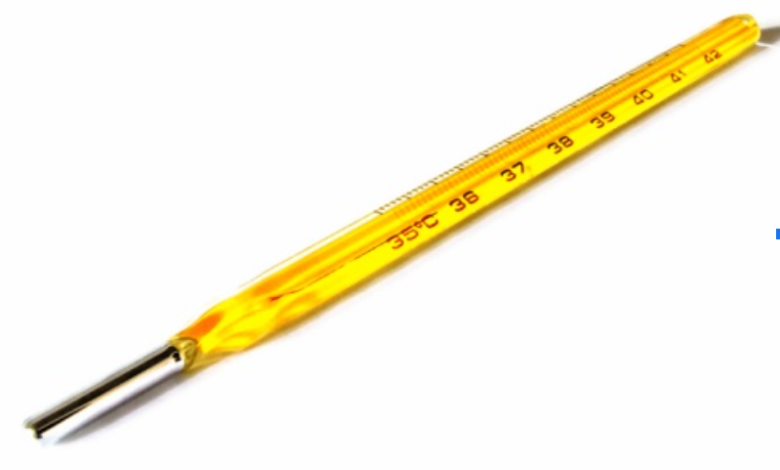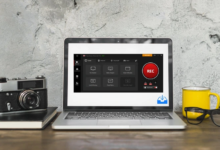How to Explain Mercury Thermometer Readings to Beginners

Introduction to Mercury Thermometers
Mercury thermometers have been a cornerstone of temperature measurement for centuries, serving as reliable instruments in medical practices, scientific laboratories, and educational settings worldwide. These elegant devices represent one of humanity’s most enduring scientific tools, combining simplicity with remarkable accuracy. For beginners encountering mercury thermometers for the first time, understanding how to read these instruments properly is essential for obtaining accurate temperature measurements.
The mercury thermometer operates on a fundamental principle of physics that demonstrates the relationship between temperature and the expansion of materials. When mercury, a liquid metal at room temperature, is exposed to heat, it expands uniformly and predictably. This expansion creates a visual indication of temperature that can be read with precision when you understand the proper techniques.
Learning to read mercury thermometers effectively requires patience, attention to detail, and a systematic approach. Many beginners feel intimidated by these instruments initially, but with proper guidance and practice, anyone can master the skill of accurate temperature reading. The process involves understanding the physical components of the thermometer, recognizing the scale markings, and developing the visual acuity necessary to determine where the mercury column ends.
Understanding the Basic Components
A mercury thermometer consists of several essential components that work together to provide accurate temperature readings. The glass tube forms the main body of the instrument and is carefully calibrated to ensure consistent measurements. This tube is typically made from borosilicate glass, which has excellent thermal properties and resists expansion and contraction that could affect accuracy.
The mercury reservoir, located at the bottom of the thermometer, contains the liquid mercury that serves as the temperature-sensitive element. This reservoir is precisely sized to contain the appropriate amount of mercury for the thermometer’s intended range. The mercury itself is carefully purified to ensure consistent expansion properties and accurate readings.
The capillary tube extends upward from the reservoir and provides the narrow channel through which mercury rises as temperature increases. The diameter of this tube is critical to the thermometer’s sensitivity and accuracy. A narrower tube will show greater movement for small temperature changes, while a wider tube provides more stability but less sensitivity.
The scale markings on the thermometer provide the reference points for reading temperature values. These markings are typically etched or printed directly onto the glass tube or on a separate scale positioned alongside the mercury column. The precision of these markings directly affects the accuracy of temperature readings.
The Science Behind Mercury Thermometers
The operation of mercury thermometers relies on the principle of thermal expansion, a fundamental property of matter that describes how materials change volume in response to temperature changes. Mercury exhibits particularly useful expansion characteristics that make it ideal for temperature measurement applications.
When a mercury lab thermometer is heated, its molecules gain kinetic energy and move more rapidly, causing the substance to expand. This expansion is highly predictable and follows well-established physical laws. The coefficient of thermal expansion for mercury is approximately 0.000182 per degree Celsius, meaning that for every degree of temperature increase, mercury expands by this fractional amount.
The linear relationship between temperature and mercury expansion allows for the creation of accurate temperature scales. As the mercury column rises or falls within the capillary tube, its height corresponds directly to the ambient temperature. This direct relationship eliminates the need for complex calculations or conversions, making mercury thermometers straightforward to read once you understand the basic principles.
The thermal mass of mercury also contributes to the reliability of these instruments. Mercury responds relatively quickly to temperature changes while maintaining stability once thermal equilibrium is reached. This balance between responsiveness and stability makes mercury thermometers particularly valuable for applications requiring both accuracy and consistency.
See also: Crafting Custom 3D Printed Home Organization Solutions with Dual-Color Filament Techniques
Reading Temperature Scales
Understanding temperature scales is fundamental to reading mercury thermometers accurately. Most mercury thermometers use either the Celsius scale, Fahrenheit scale, or both, with markings clearly indicated on the instrument. The Celsius scale, used primarily in scientific and medical applications, marks the freezing point of water at 0 degrees and the boiling point at 100 degrees.
The Fahrenheit scale, more common in certain regions and applications, sets the freezing point of water at 32 degrees and the boiling point at 212 degrees. Some thermometers display both scales simultaneously, allowing users to read temperatures in their preferred system without requiring conversions.
When examining the scale markings, you will notice major graduation marks that typically represent whole degree increments, and minor graduation marks that indicate fractional degrees. The spacing between these marks is carefully calibrated to provide accurate readings when aligned with the mercury column height.
The precision of scale reading depends on your ability to interpolate between graduation marks. For example, if the mercury column falls between the 37-degree and 38-degree marks, you must estimate the fractional position to determine the precise temperature. This skill develops with practice and careful observation.
Step-by-Step Reading Process
Reading a mercury thermometer accurately requires a systematic approach that ensures consistent and reliable results. Begin by ensuring the thermometer has been properly prepared and allowed sufficient time to reach thermal equilibrium with the environment or subject being measured.
Hold the thermometer at eye level to eliminate parallax errors that can occur when viewing the scale from an angle. Parallax occurs when the apparent position of the mercury column changes based on your viewing angle, potentially leading to inaccurate readings. Maintaining a perpendicular viewing angle to the scale ensures the most accurate measurement possible.
Locate the top of the mercury column, which appears as a distinct meniscus or curved surface at the interface between the mercury and the empty space above it. The mercury meniscus typically forms a convex shape, with the highest point in the center. Read the temperature at this highest point of the meniscus for the most accurate measurement.
Identify the scale marking that aligns most closely with the top of the mercury column. If the mercury level falls between two graduation marks, estimate the fractional position to determine the precise temperature reading. Practice this estimation process repeatedly to develop accuracy and consistency in your readings.
Record the temperature reading immediately after observation to prevent memory errors. Include appropriate units (Celsius or Fahrenheit) and note any relevant conditions that might affect the measurement, such as ambient temperature or measurement duration.
Common Mistakes and How to Avoid Them
Beginning users of mercury thermometers often make several predictable mistakes that can compromise measurement accuracy. Understanding these common errors and learning to avoid them is essential for developing proficiency in thermometer reading.
Parallax error represents one of the most frequent mistakes made by beginners. This occurs when the thermometer is viewed from an angle rather than straight-on, causing the apparent position of the mercury column to shift relative to the scale markings. Always position yourself directly in front of the scale and maintain eye level with the mercury column to eliminate parallax effects.
Insufficient equilibration time is another common source of error. Mercury thermometers require adequate time to reach thermal equilibrium with their environment before accurate readings can be obtained. Rushing the measurement process often results in readings that reflect transitional temperatures rather than stable conditions. Allow at least three to five minutes for equilibration in most situations.
Misreading the meniscus position leads to systematic errors in temperature measurement. The curved surface of the mercury column can be confusing for beginners, who may read from the bottom or sides of the meniscus rather than the top. Always read from the highest point of the mercury surface for consistent accuracy.
Improper handling and preparation of the thermometer can also affect reading accuracy. Ensure the thermometer is clean, undamaged, and properly shaken down (if applicable) before use. Contamination or air bubbles in the mercury column can significantly impact measurement reliability.
Safety Considerations
Working with mercury thermometers requires careful attention to safety procedures due to the toxic nature of mercury. While properly maintained thermometers pose minimal risk during normal use, broken instruments can release mercury vapor and liquid mercury that present serious health hazards.
Mercury vapor is particularly dangerous because it can be absorbed through the lungs and accumulate in the body over time. Even small amounts of mercury vapor can cause health problems, especially with repeated exposure. Always handle mercury thermometers carefully to prevent breakage and never touch mercury directly with bare skin.
In the event of a mercury thermometer breakage, follow proper cleanup procedures immediately. Evacuate the area and ensure adequate ventilation before beginning cleanup. Use appropriate tools such as cardboard or a squeegee to collect mercury droplets, never use a vacuum cleaner or broom, which can spread mercury particles and create additional vapor.
Store mercury thermometers in protective cases when not in use to prevent accidental breakage. Keep them away from areas where they might be dropped or damaged, and ensure they are stored at appropriate temperatures to prevent mercury expansion beyond the instrument’s range.
Consider alternatives to mercury thermometers when possible, especially in educational settings or areas where breakage risk is elevated. Digital thermometers and alcohol-based thermometers can provide similar accuracy without the associated health risks of mercury exposure.
Practical Applications
Mercury thermometers find application in numerous fields where accurate temperature measurement is essential. Medical professionals have traditionally relied on mercury thermometers for patient temperature monitoring, although digital alternatives are increasingly common in modern healthcare settings.
Laboratory applications represent another significant use case for mercury thermometers. Scientific research often requires precise temperature measurements that mercury thermometers can provide reliably. The stability and accuracy of these instruments make them valuable tools in chemistry, biology, and physics laboratories worldwide.
Industrial processes frequently depend on accurate temperature monitoring for quality control and safety purposes. Mercury thermometers provide reliable measurements in manufacturing environments where temperature control is critical to product quality or process safety.
Educational institutions use mercury thermometers to teach fundamental principles of temperature measurement and thermal physics. Students can observe the direct relationship between temperature and thermal expansion through hands-on experience with these instruments.
Environmental monitoring applications also benefit from the reliability of mercury thermometers. Weather stations, agricultural facilities, and research installations often use these instruments for long-term temperature data collection where consistency and accuracy are paramount.
Comparison with Digital Thermometers
Modern digital thermometers offer several advantages over traditional mercury instruments, including faster response times, easier reading, and elimination of mercury-related safety concerns. Digital displays provide clear numerical readouts that eliminate the need for scale interpretation and reduce reading errors.
However, mercury thermometers retain certain advantages that make them valuable in specific applications. They require no batteries or electronic components, making them reliable in remote locations or emergency situations. The simplicity of mercury thermometers also makes them less susceptible to electronic failure or calibration drift over time.
Accuracy comparisons between mercury and digital thermometers depend on the specific instruments being compared. High-quality mercury thermometers can provide accuracy comparable to or exceeding that of many digital alternatives, particularly when properly calibrated and maintained.
Cost considerations often favor mercury thermometers for applications requiring multiple instruments or budget constraints. While initial costs may be similar, mercury thermometers typically have longer service lives and lower maintenance requirements than electronic alternatives.
The choice between mercury and digital thermometers ultimately depends on specific application requirements, safety considerations, and user preferences. Both technologies have their place in modern temperature measurement applications.
Maintenance and Care
Proper maintenance extends the life and accuracy of mercury thermometers while ensuring safe operation. Regular inspection for damage, contamination, or calibration drift helps maintain measurement reliability and prevents safety hazards.
Cleaning mercury thermometers requires gentle techniques that avoid damage to the glass components or scale markings. Use mild soap solutions and soft materials to remove contamination, avoiding abrasive cleaners or rough handling that could scratch or crack the glass.
Storage conditions significantly impact thermometer longevity and accuracy. Maintain stable temperatures and protect instruments from mechanical shock during storage. Proper cases or holders prevent accidental damage and make thermometers readily available when needed.
Calibration verification should be performed periodically to ensure continued accuracy. Compare readings with known temperature standards or certified reference thermometers to identify any drift or systematic errors that may have developed over time.
Handle thermometers carefully during transport and use to prevent breakage. Support the instrument properly and avoid sudden temperature changes that could cause thermal shock and cracking of the glass components.
Troubleshooting Common Issues
Mercury thermometers can develop various problems that affect their accuracy or functionality. Understanding how to identify and address these issues helps maintain reliable temperature measurements and extends instrument life.
Separated mercury columns occur when the continuous mercury thread breaks, creating gaps in the column that prevent accurate readings. This problem often results from rough handling or rapid temperature changes that cause the mercury to separate within the capillary tube.
Contamination of the mercury or scale markings can affect reading accuracy and instrument appearance. Foreign substances may adhere to the glass surfaces or mix with the mercury, creating visual obstructions or affecting thermal expansion properties.
Scale marking deterioration can occur over time, especially with frequent use or exposure to harsh conditions. Faded or damaged scale markings make accurate temperature reading difficult or impossible and may require instrument replacement.
Calibration drift represents a gradual change in instrument accuracy that develops over extended periods. Regular calibration checks help identify this problem before it significantly affects measurement reliability.
Glass damage, including cracks or chips, compromises both accuracy and safety. Even minor damage can progress over time and may eventually lead to mercury release or complete instrument failure.
Certified Material Testing Products (Certified MTP) is a leading supplier of construction materials testing equipment and laboratory supplies in the United States. They offer a comprehensive range of products for testing concrete, asphalt, aggregate, soil, and cement, catering to both field and laboratory applications But no matter whether they are preferred or not, the whole idea behind these tools is similar: getting a polished, shiny, and permanent effect. New to stucco or a seasoned pro, investing in good tools and learning the nuances of their use is what will get you started perfecting your craft.
Teaching Tips for Educators
Educators introducing mercury thermometers to students should emphasize both proper technique and safety considerations. Demonstrate correct reading procedures clearly and provide ample opportunity for hands-on practice under supervision.
Visual aids help students understand the relationship between temperature and mercury expansion. Diagrams, videos, and demonstrations can illustrate concepts that may be difficult to grasp through verbal explanation alone.
Practice exercises should progress from simple to complex temperature measurements, allowing students to develop confidence and skill gradually. Start with room temperature measurements before advancing to more challenging applications.
Safety education must be integrated throughout the learning process, not treated as an afterthought. Students should understand the properties of mercury and proper handling procedures before beginning practical work with thermometers.
Assessment methods should evaluate both technical accuracy and safety awareness. Students must demonstrate proper reading technique and understanding of safety protocols to ensure responsible instrument use.
Frequently Asked Questions
How long should I wait before reading a mercury thermometer?
Allow at least 3-5 minutes for the thermometer to reach thermal equilibrium with its environment. For body temperature measurements, wait until the mercury column stops rising, which typically takes 3-4 minutes under the tongue.
Why does my mercury thermometer give different readings than my digital thermometer?
Small differences between thermometers are normal due to manufacturing tolerances and calibration variations. Differences larger than 1-2 degrees may indicate a problem with one of the instruments that requires investigation.
Can I repair a mercury thermometer with a separated column?
Mercury column separation can sometimes be corrected by gentle warming and cooling cycles, but this should only be attempted by experienced users due to safety concerns. Professional recalibration may be necessary after any repair attempts.
How accurate are mercury thermometers compared to digital ones?
High-quality mercury thermometers can be extremely accurate, often within 0.1-0.2 degrees Celsius. Accuracy depends on proper calibration, maintenance, and reading technique rather than the technology itself.
What should I do if I break a mercury thermometer?
Immediately ventilate the area and evacuate people and pets. Use cardboard or similar tools to collect mercury droplets, never use a vacuum. Contact local authorities for proper disposal guidance, as mercury requires special handling.
How often should mercury thermometers be calibrated?
Professional calibration should be performed annually for critical applications, or whenever accuracy is questioned. Regular comparison with certified reference standards helps identify calibration drift between formal calibrations.
Can mercury thermometers be used in freezing temperatures?
Most mercury thermometers have lower limits around -38°C (-36°F), where mercury freezes. Special low-temperature thermometers use alcohol or other fluids for measurements below mercury’s freezing point.
Why is my mercury thermometer reading higher or lower than expected?
Check for proper equilibration time, correct reading technique, and potential calibration issues. Environmental factors such as air currents or radiant heat sources can also affect readings.
Is it safe to use mercury thermometers around children?
While intact mercury thermometers pose minimal risk, the potential for breakage makes them less suitable for unsupervised use by children. Consider digital alternatives for pediatric applications to eliminate mercury exposure risks. For more Any Business Card, check out this guide from NFC Business Card Temperature corrections for measuring equipment become particularly important during extreme weather conditions.
How do I clean a contaminated mercury thermometer?
Use mild soap and water with soft materials to clean the exterior. Never disassemble the thermometer or attempt to clean the interior mercury reservoir, as this could cause contamination or damage to the instrument.







